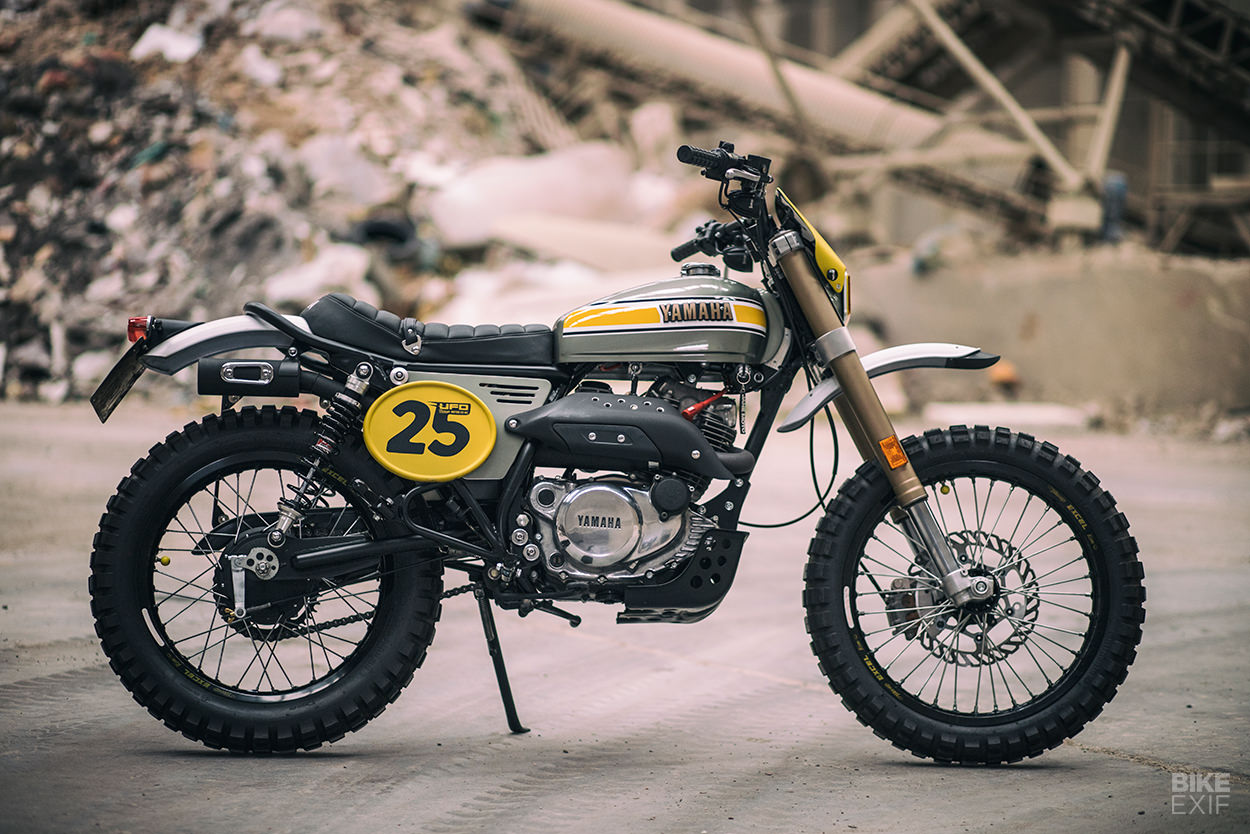
We’ve got used to heavy motorcycles. These days, anything around 450 pounds or 200 kilos is regarded as light. And most of the bestselling bikes in the USA weight 600 pounds or more.
In the days before emissions controls, fuel injection systems and electronic aids, bikes were smaller and lighter. And in Europe especially, compact commuters sold by the shipload—bikes like the Yamaha SR250. Known as the Yamaha Exciter in the US, this feisty little single weighed around 287 pounds (130 kilos) wet.
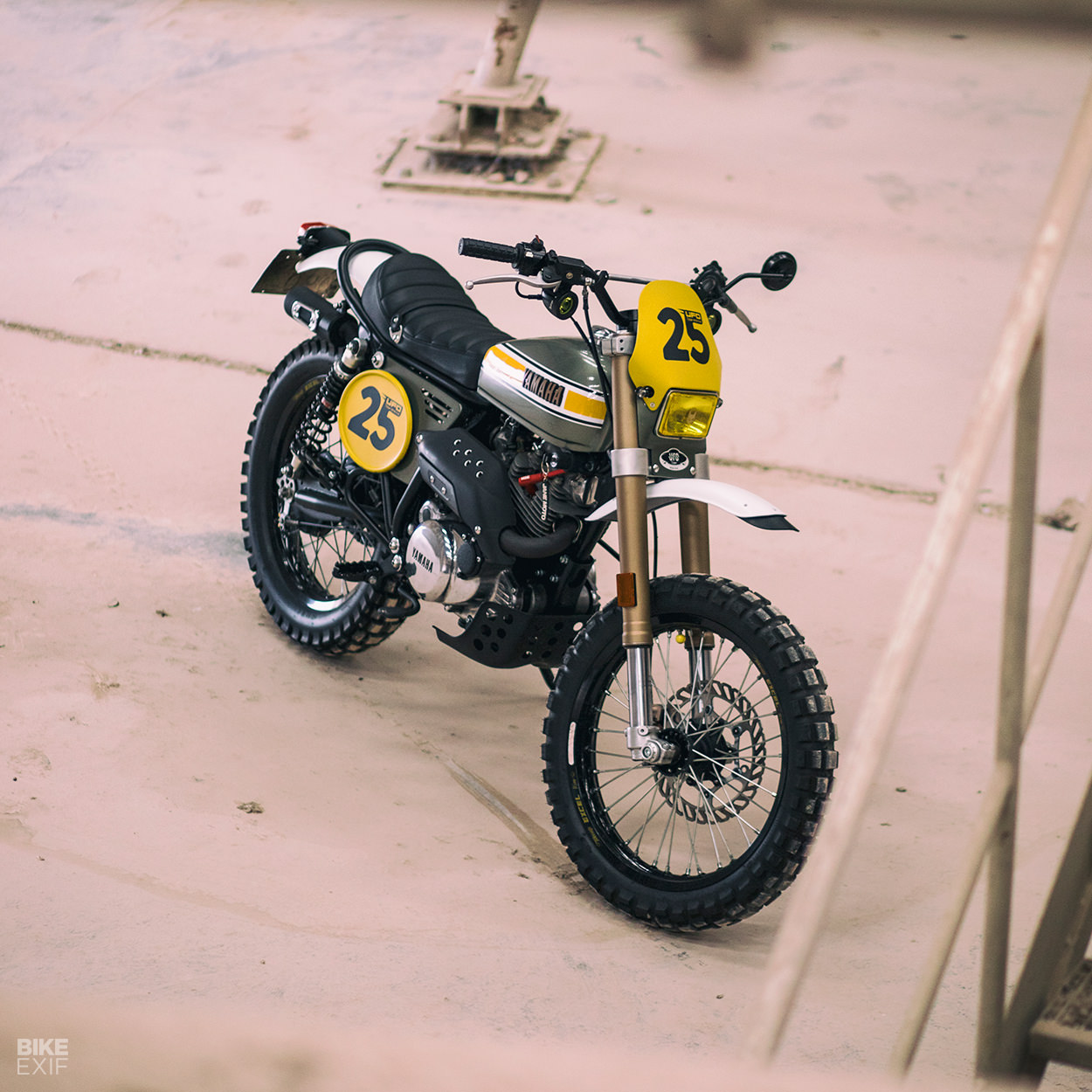
Efraón Triana loves small bikes. The Madrid-based builder runs UFO Garage, although he made his name as one of the duo behind Cafe Racer Dreams.
Triana wanted to build “the perfect motorcycle for everyday use in the city, or for a Sunday ride in the countryside.” He chose an SR250 as his starting point, because they are plentiful in Spain: even after production of the first series finished in Japan and the USA, Spain carried on building the little SR from 1982 to 2000.
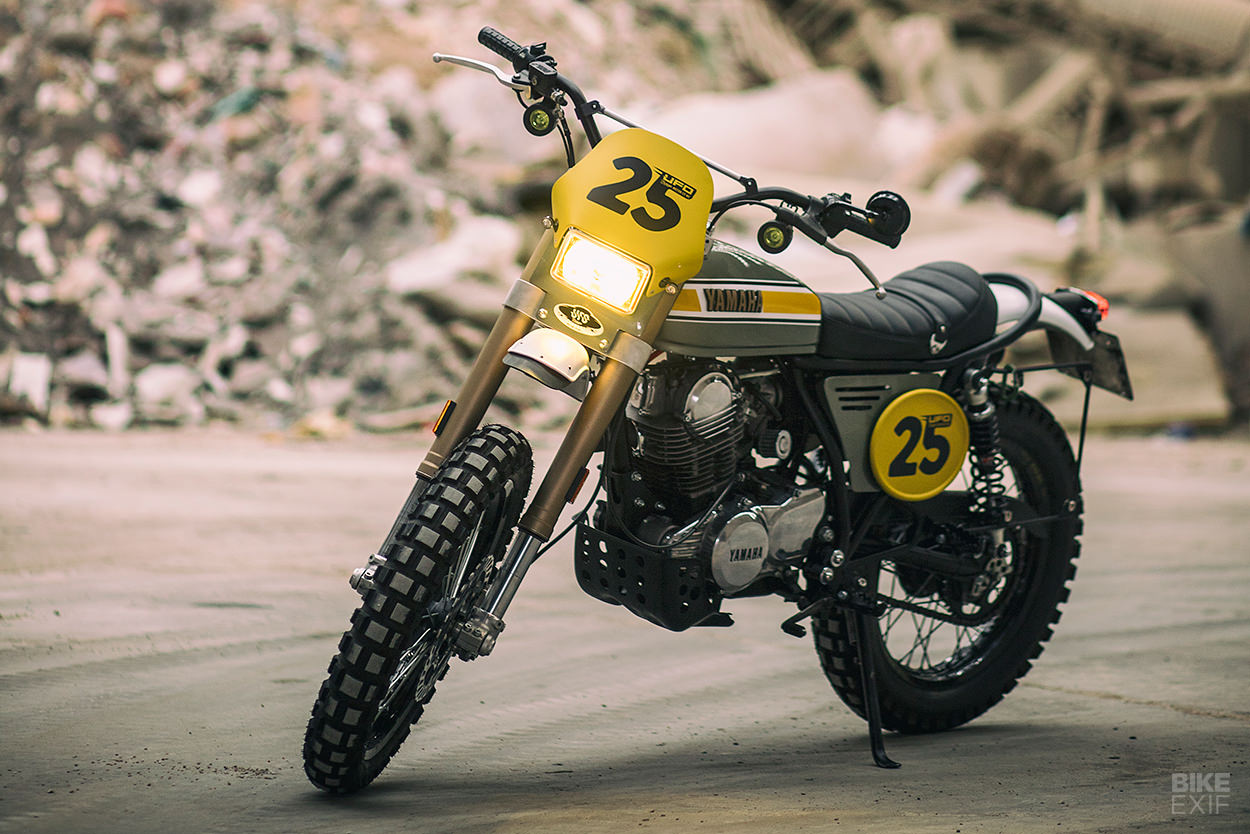
Triana located a 1986 SR250 in his home city, with just over 11,000 km on the clock. It didn’t cost much, because this build is all about maximum bang for the buck.
“From the beginning, I was clear that this would be a ‘cheap’ project—but with a very careful aesthetic,” he says.
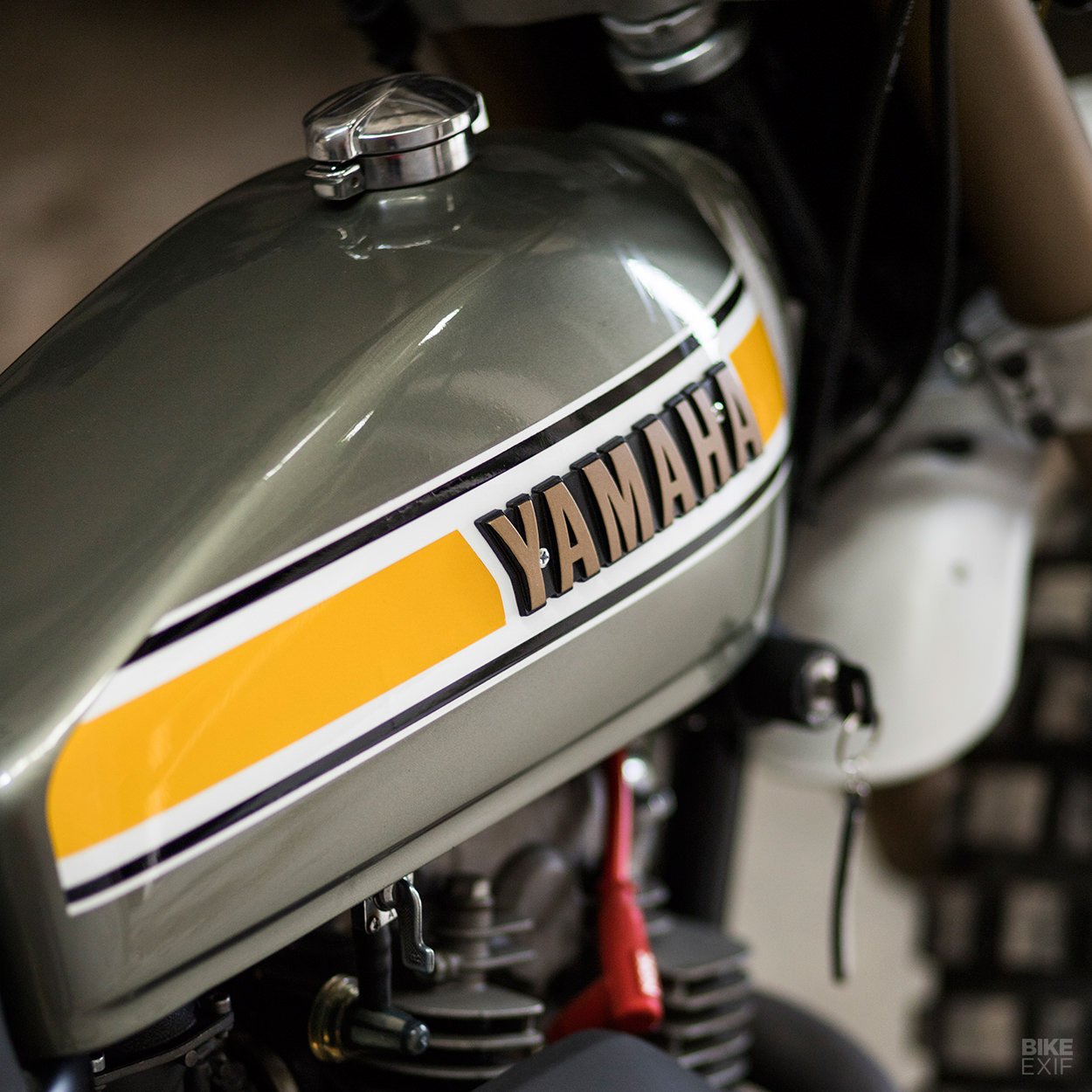
So he’s reconfigured the Yamaha as “a pure scrambler. A small, incredibly light motorcycle that weighs only 75 kilos [165 pounds] now. It is powerful enough, and very simple and practical.”
For the design, Triana was inspired by the enduro bikes of the 70s. He cites movies like Rambo, and “the sensation of freedom that these films transmit.” Whenever possible, Triana has also used old parts that have been hiding on his workshop shelves or in drawers.
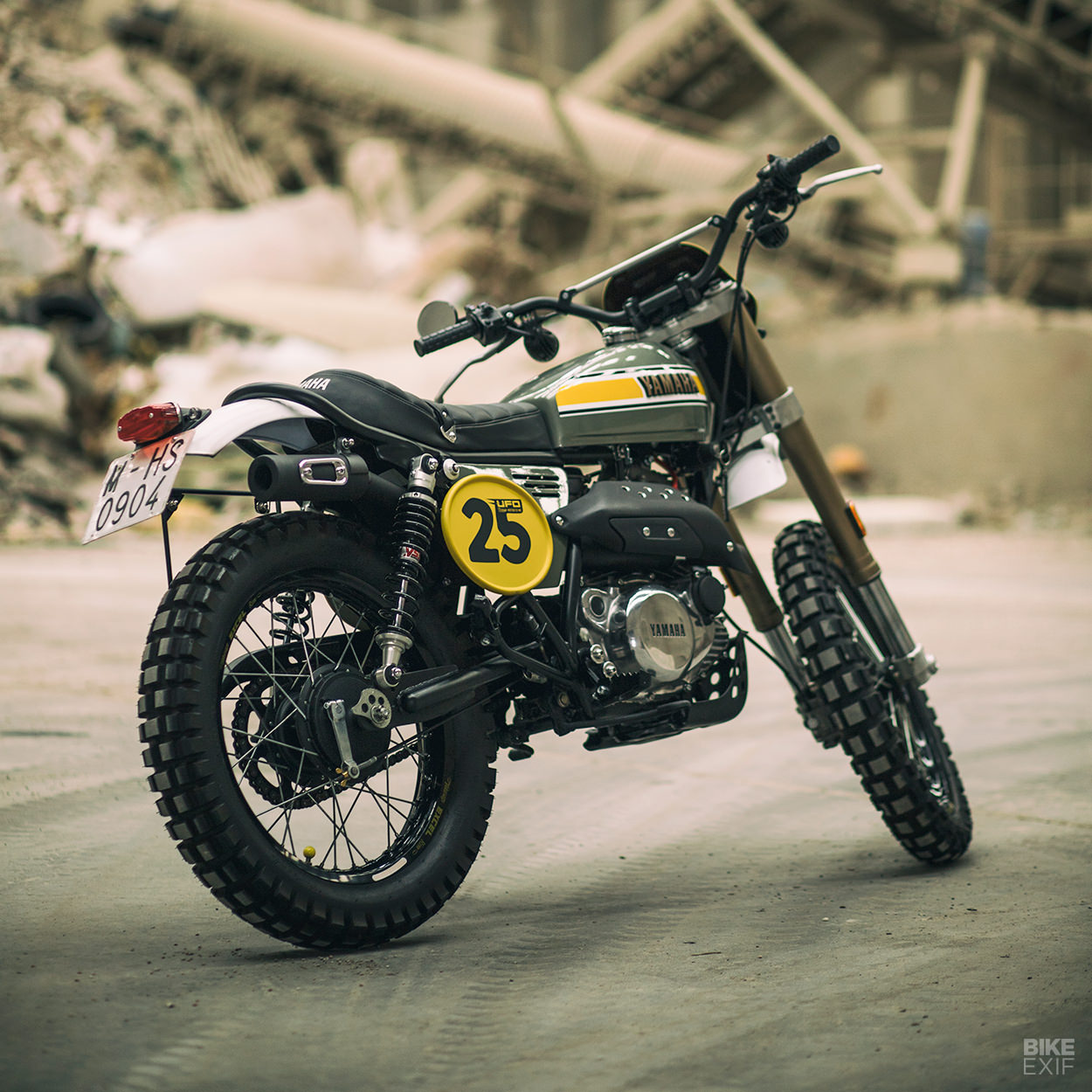
Like most commuter bikes, the stock SR250 looks rather ungainly. But not any more. Key to the new look is a fuel tank lifted from a tiny 50cc Peugeot from the 1960s, and tweaked to fit.
Triana has custom-made a comfortable new seat with plush upholstery, and new looped rear frame tubing that closely follows its lines. He’s also bucked the current custom trend by avoiding an ‘open triangle’ under the seat, preferring to make new side covers that hide the battery and air intake.
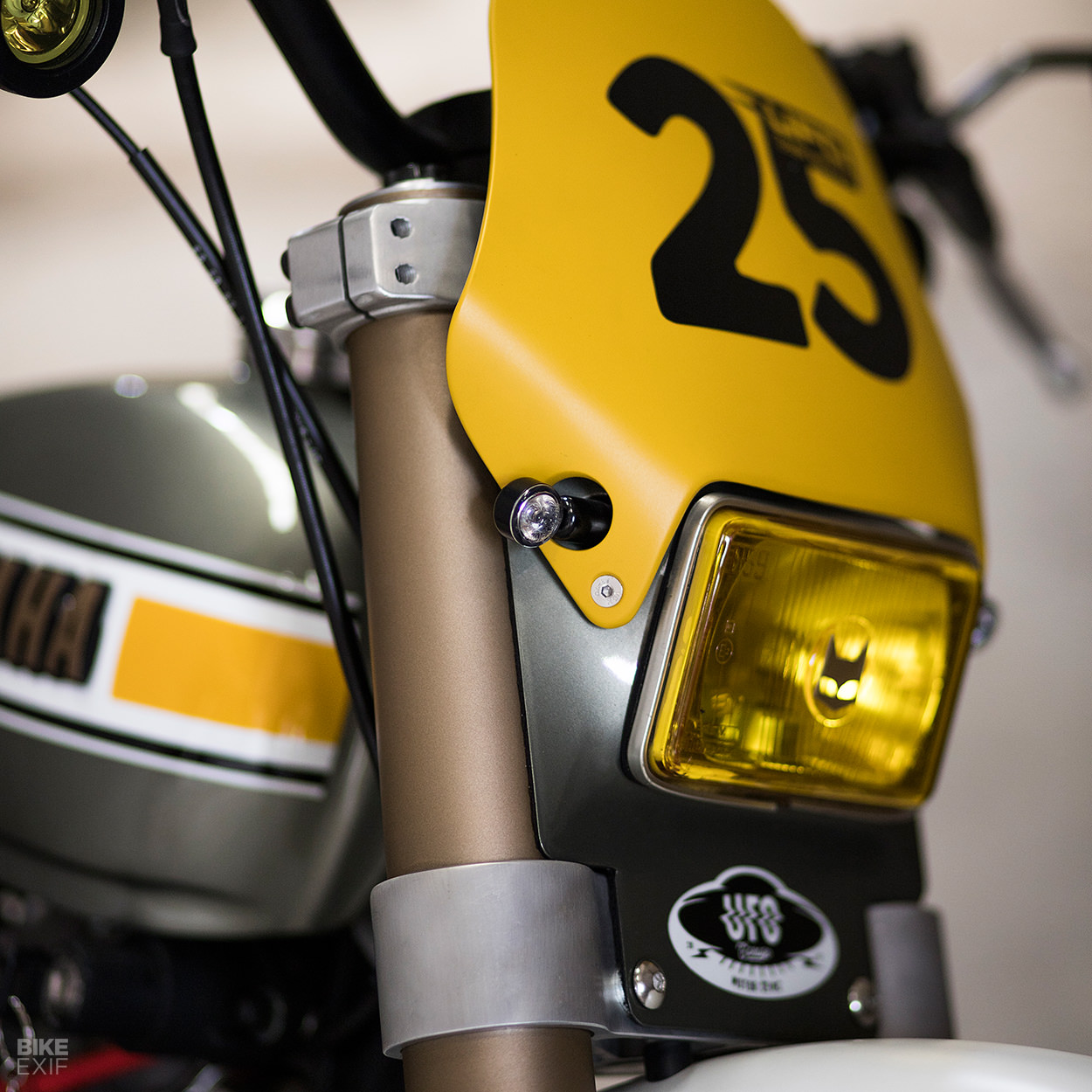
To amp up the vintage vibe, there’s an old rectangular Marchal headlight in a custom-made nacelle, with a small wind deflector on top. The bars are from a previous UFO Garage project, but Triana has transferred over the original switchgear.
What appear to be chunky indicators are actually long-range driving lights, but most of the rest of the bar area is standard fare. The ‘real’ turn signals are tiny LEDs plumbed into the existing loom.
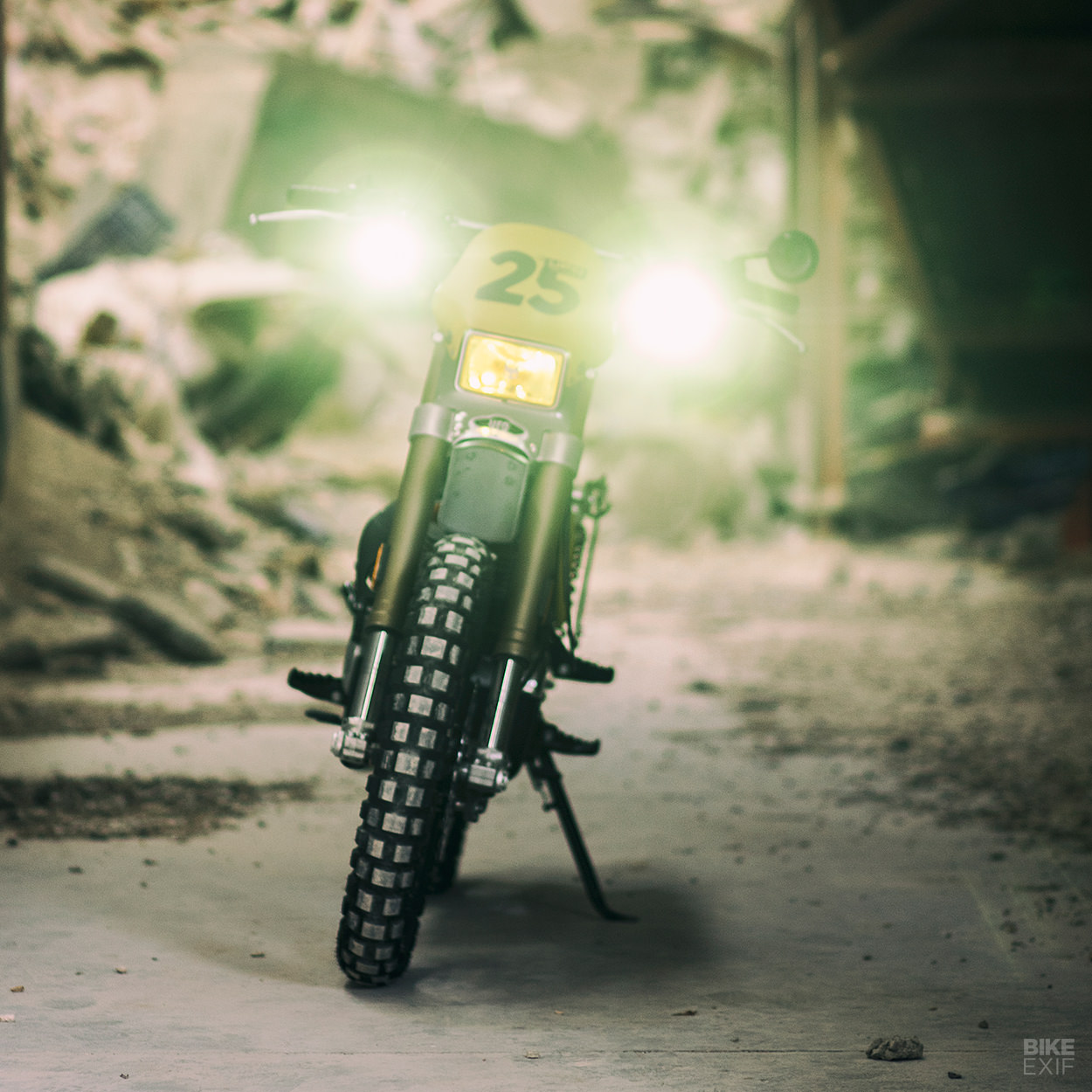
“I didn’t want to modify the electrics,” Triana notes. “This bike is for my cousin, who needs reliability.”
The suspension has been upgraded though, in keeping with the SR250’s new dual sport identity. The forks are from a GasGas 400 motocrosser, with the yokes modified to fit. And Triana has modified the GasGas brake system to take a 280mm disc for modern stopping power.
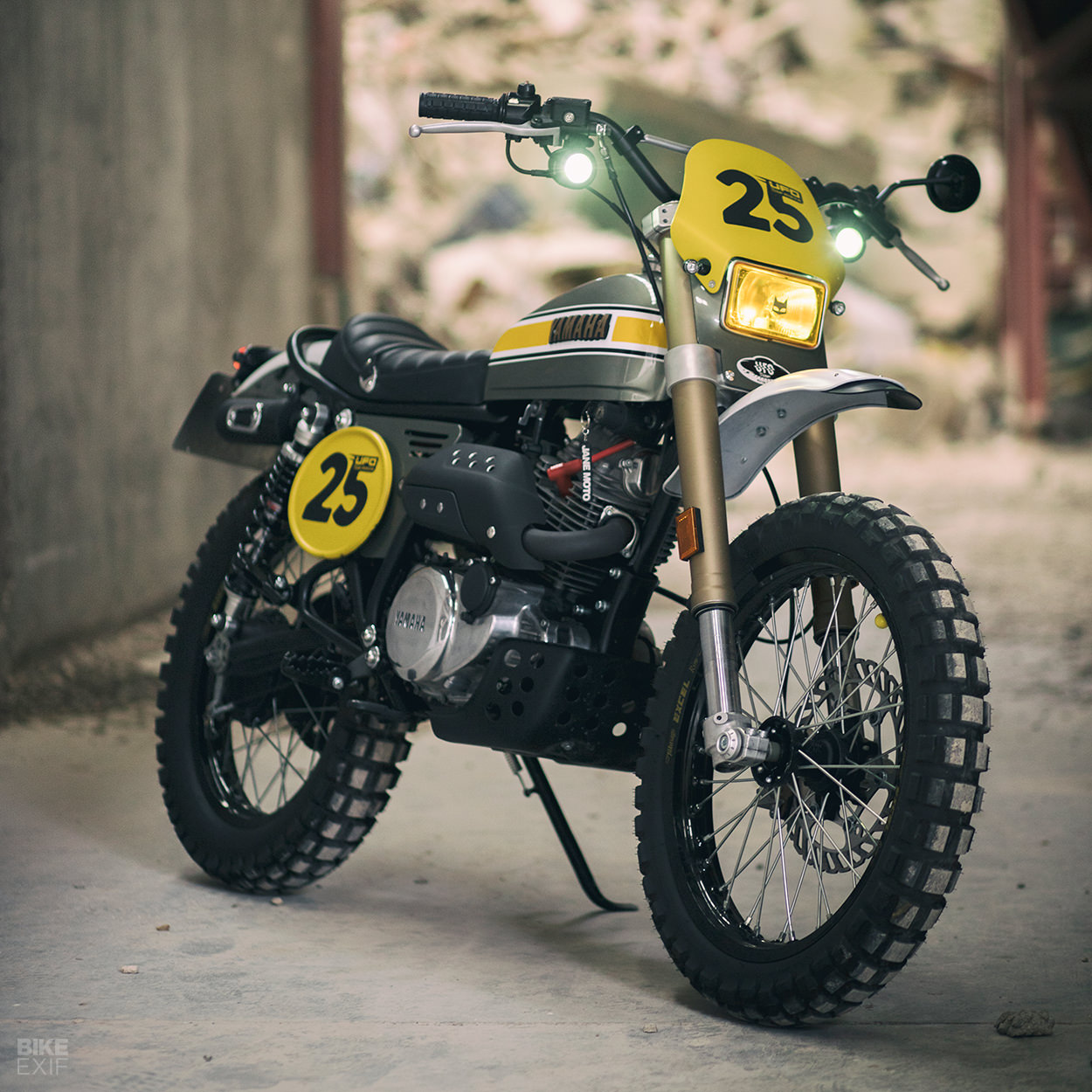
The heavy old SR250 wheels are gone, replaced by lightweight aluminum Excel Excell Tagasako MX rims—19 inches at the front and 18 at the back. Wisely, Triana has used Continental’s popular TKC80 tires: “they give a light motorcycle good behavior, and look very good.”
Ample fenders cover the new rubber: an old recycled one at the front, and a new piece fashioned from aluminum at the back. Extra protection comes from the engine bashguard, which is adapted from a Honda NX650 Dominator part, and there’s a hand-made heat guard over the exhaust piping too.
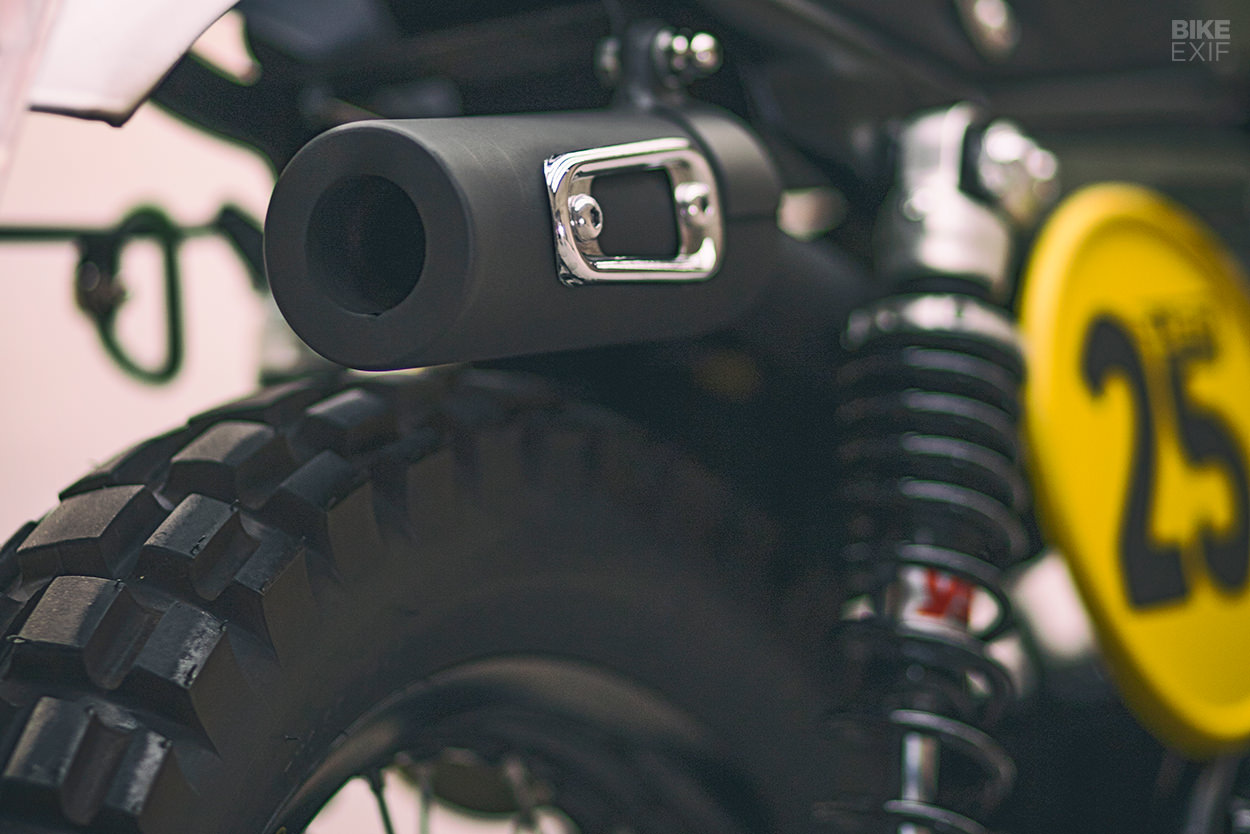
The exhaust itself is brilliantly discreet and sits well out of the way of damage. It’s yet another hand-made part and well muffled: “I didn’t want this motorcycle to make a lot of noise. It is for everyday use,” says Triana.
Another everyday, practical touch is a mounting system for a backpack, which can be attached to the SR250 by the rear wheel. It uses modified Fender guitar straps, and can be unhooked when the rider dismounts.
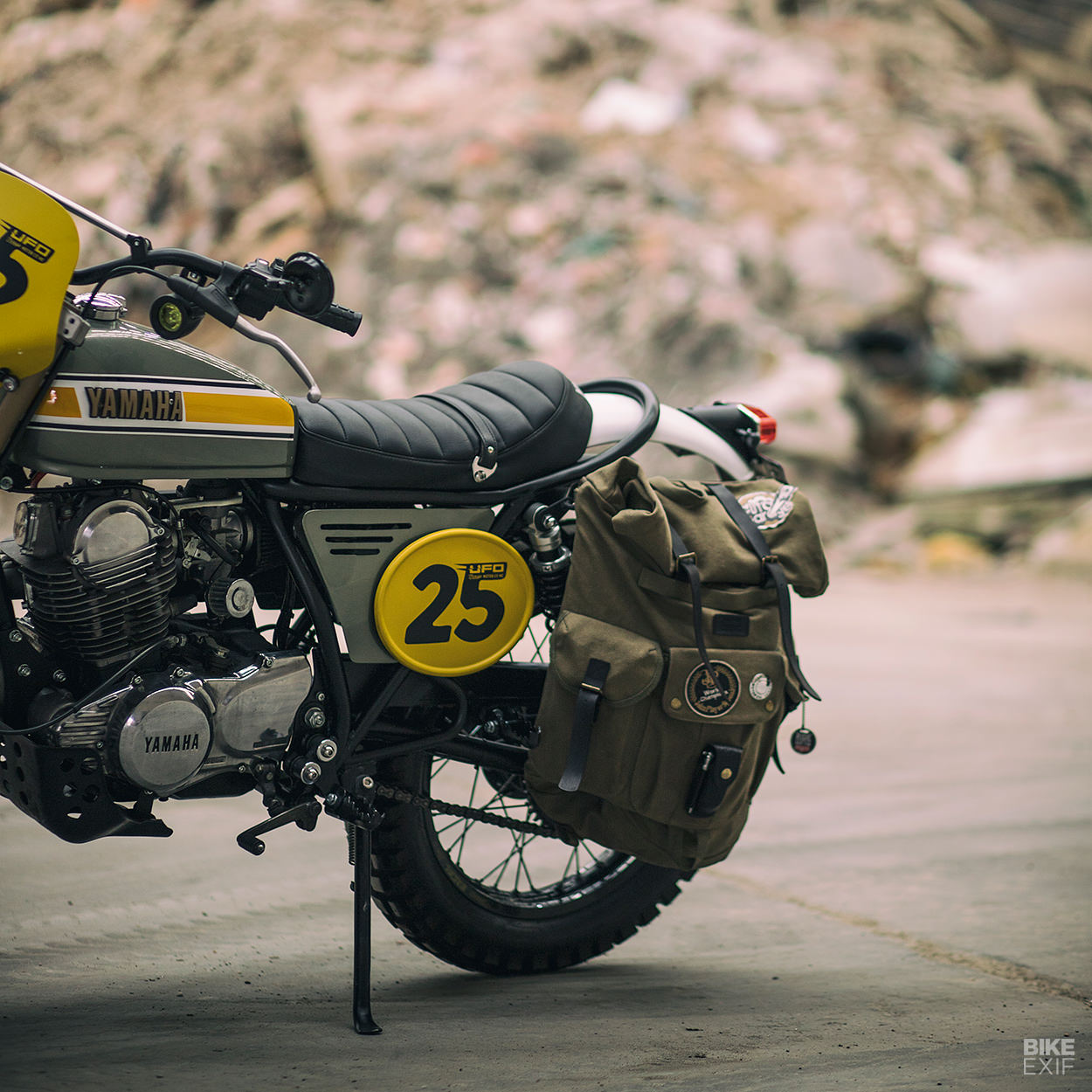
Given the amount of exotic machinery that drops into our inboxes at EXIF, it’s easy to become blasé about the more functional builds. But this simple and classy Yamaha has given us a serious attack of envy.
“I think scrambler bikes are coming back because they’re comfortable, practical and simple,” says Triana.

We’re inclined to agree. And we reckon this is the kind of bike Yamaha could make tomorrow and sell by the thousands if priced right.
UFO Garage | Facebook | Instagram | Images by Rafa Dieguez Foto
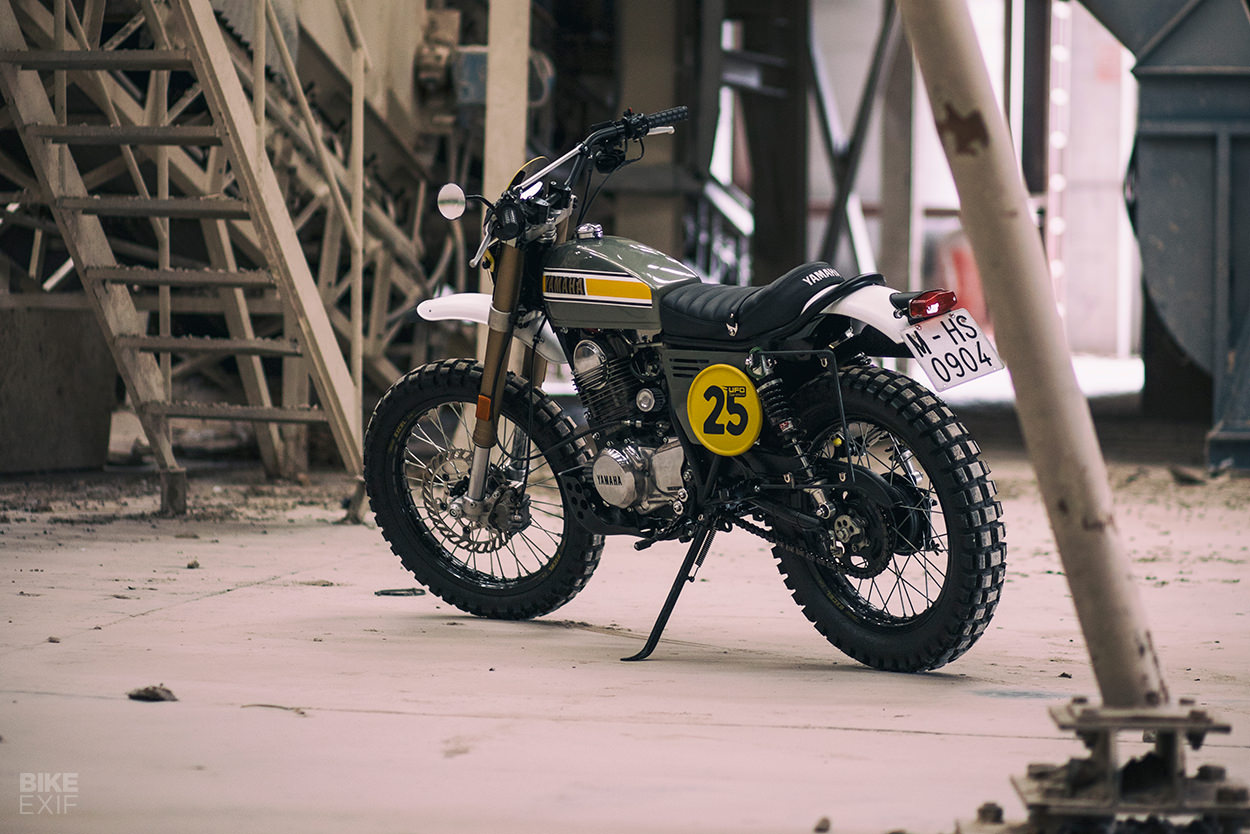
from Bike EXIF https://ift.tt/2pjL2vk
No comments:
Post a Comment